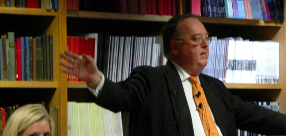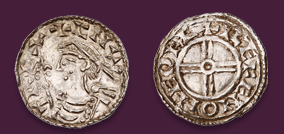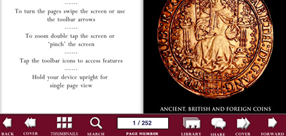
Auction: 25003 - Orders, Decorations and Medals
Lot: 312
The mounted C.B. group of five miniature dress medals attributed to Lieutenant-Colonel C. E. Haynes, Royal Engineers, an early association footballer, whose remarkable career saw him invent a new form of signalling which resulted in a 'mention' during the Siege of Eshowe
His skills were called on again during the Warren Expedition to Bechuanaland 1884 and during the fortification of Britain's coastal defences in the run up to the Great War, despite retiring in 1912 he saw additional War Service after hostiles commenced
The Most Honourable Order of the Bath, Companion's (C.B.) Badge, South Africa 1877-79,1 clasp 1878-9; 1914-15 Star; British War and Victory Medals, mounted as worn, in a Spink & Son fitted case, the enamel on the first somewhat worn overall very fine (5)
Ex-Derek Robinson Collection.
M.I.D. London Gazette 16 May 1879.
Charles Edward Haynes was born in Hampstead on 8 July 1855, the son of a successful builder named William Haynes, and his wife, Mary Ann. Educated at the Royal Military Academy he was commissioned as lieutenant in the Royal Engineers on 28 January 1875. Joining the Sappers' Second XI he played for them before making the First XI in 1876 taking part in the 1876-77 FA Cup and the 1877-78 Cup. Haynes' sporting career was cut short by the outbreak of the Zulu War which saw him posted to South Africa with 2nd Field Company, Royal Engineers on 2 December 1878.
Arriving at Durban on 4 January 1879 he was attached to Colonel Charles Pearson's Column, meeting the Zulu's in Battle on 22 January at Inyezane they reached Eshowe the following day. News of the disaster at Isandlwana reached them here and it gave Pearson a serious problem, his force was in enemy territory unsupported with its flank now open. He established a garrison of Eshowe and soon found himself under siege there. Haynes was present with the signalling post of the Tugela, cut off from Pearson's column and it was there that he came up with a novel idea.
'When it became apparent that the muddle could not be resolved quickly (ships had been loaded incorrectly in England) and after an exchange of telegrams with Fort Pearson, Haynes was ordered on 16 January to follow up without the missing equipment. By the time he reached Fort Pearson Wynee and the rest of the Company had gone to Eshowe with the column commander Colonel Pearson, and were now besieged there in the KwaMondi mission station, just to the east of the present town. The resourceful Haynes decided on his own initiative to do something about communicating with them. Lord Celmsford, in command and now at Fort Pearson, was sceptical.'
(Signalling in the Anglo-Zulu War 1879 by Lieutenant-Colonel David Mullineaux refers)
However by making use of a small, hand-held shaving mirror he acquired in Smith's Hotel Haynes was able to flash signals to Eshowe. The system was far from perfect however messages made it through and soon the British were able to co-ordinate, not only informing the fort that they could expect relief but preparing a sally to occur at the same time.
'Later, after the siege was over, Lord Chelmsford wrote a despatch, mentioning the twenty-three year old Lieutenant Haynes for his resourcefulness:
"For some little time we had been in communication with Colonel Pearson by means of flashing signals; for this very great assistance to our operations, I am indebted to Lieutenant Haines [SIC], R.E., who, despite some failure and discouragement at first, persevered until complete success was attained".'
(IBID)
After the relief of Eshowe Haynes and the rest of 2nd Field Company joined Colonel Evelyn Wood's Column for the advance on Ulundi, seeing action in the Battle of Ulundi. There is reference to him being 'mentioned' a second time during this phase of the campaign although no London Gazette entry has been found to bear this out.
Remaining in South Africa he served with Sir Charles Warren's expedition to Bechuanaland in 1884-85. Warren, also a Royal Engineer was acting as the Special Commissioner for the Government in the matter of German backed Ndebele tribes and Boers from the states of Stellaland and Goshen encroaching on British territories. Haynes served with the 7th Field Company at the time however the expedition never encountered armed resistance and proved more an exercise in Imperial muscle flexing.
Haynes was advanced Captain on 28 January 1886 and further promoted Major on 1 October 1894. He continued to rise in the ranks through 1900 being advanced Colonel in 1907 and taking up the responsibility for the Coastal Defences, Eastern Command in 1908. He served in the run up to the Great War, being awarded his C.B. that year as a result of his work in 1911.
Retiring the following year he returned to service on the outbreak of the Great War, entering the war in France on 25 November 1915 and serving with the 11th Labour Battalion, Royal Engineers. Settling at Roborough House on Furze Hill Road, Torquay Haynes died at the Mount Stuart Nursing Home in Torquay, on 29 October 1935.
Subject to 20% VAT on Buyer’s Premium. For more information please view Terms and Conditions for Buyers.
Estimate
£160 to £200
Starting price
£130




